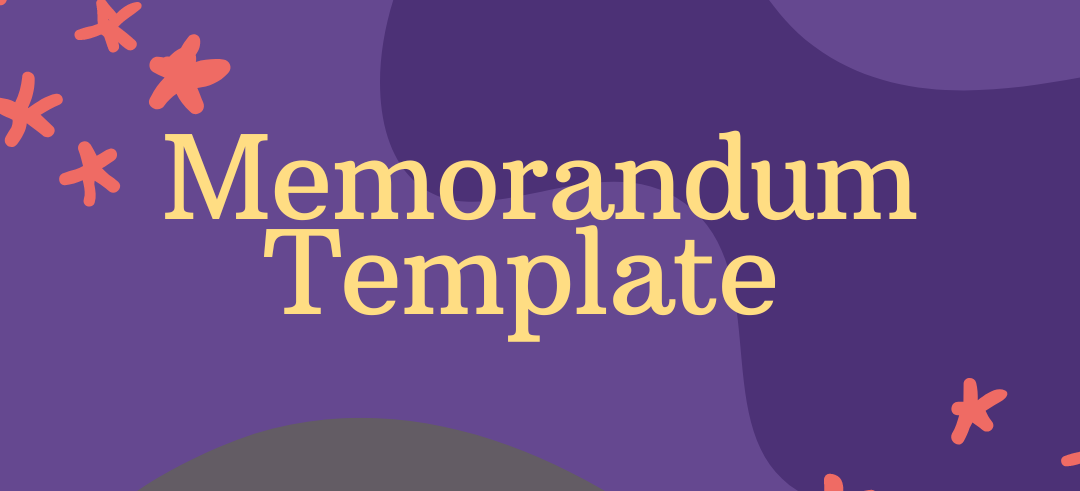
While communicating with external entities in a business is rightfully agreed to need extreme meticulousness and pedantic organization and planning, internal communication, i.e., communication within the company, is often grossly overlooked. Communication within the company also needs to be just as planned and well-structured, if not more. One of the efficient ways of communicating is using memorandums, more commonly known as “memos”.
In a business organization, a memo or memorandum is a written statement used for internal communication. Businesses frequently utilize it to inform staff members and internal stakeholders on team activities, company policies, and projects. A memo’s objective is to draw quick attention to a task, project, circumstance, or issue that may have an impact on one’s professional or personal life. A memorandum may be used to convey a request, a meeting announcement, or any crucial information. In order to convey your message in a formal way, it is crucial to comprehend the proper memo format.
However, there are also other kinds of purposes served by memos. Memorandums are used to share fresh information with readers and have uses in a variety of enterprises and communities. Memos can be used by communities to inform residents about public safety policies, advertise different events, and create awareness about issues that have an impact on their daily life. Businesses can use memos to notify staff members about recently revised policies and procedures or to convince them to perform a specific action, such as attending an upcoming conference or convention or celebrating an organization’s successes. There are different types of memos. One of the more commonly used ones is a ‘Business Memorandum.’
The format of the business memo template is created to convey your message clearly. The information that has to be communicated in a memo should be presented in a style that is simple for many employees to understand. They will be made aware that this memo is pertinent to them precisely if the subject line is precise. Additionally, starting with an executive summary enables readers to grasp the main idea before they delve into the specifics. In addition to providing context for the message, the overview and chronology should also address any questions that might be raised. Some of the important points that an effective business memorandum should cover are:
-
Header:
To make sure your viewers know exactly what they’re getting, properly name your material “Memorandum” in the header. Then, you should add “Too,” “FROM,” “DATE,” and “SUBJECT.” This information, such as who you are addressing and why is crucial for producing content.
-
First Paragraph:
You should swiftly and succinctly define the aim of your letter in the first paragraph. “I’m writing to notify you… ” or “I’m writing to request… ” are suitable ways to start a sentence. A memo should be brief, concise, and direct. Delivering the most important information first will allow you to go into more detail in the paragraphs that follow.
-
Second Paragraph:
You should give background information or evidence in the second paragraph. Let’s take the scenario where your memo alerts the corporation about an internal reorganisation. If so, the second paragraph ought to state something like, “We’ve determined that separating our content team from our video production team makes more sense as our business continues to expand. This allows those teams to concentrate more on their specific objectives. “
-
Third Paragraph:
In the third paragraph, you should specify what you want from each employee. For example, if you’re organising a company outing, you may write, “Please RSVP with dietary preferences,” or “Please email me with queries.” In contrast, you can add, “I’d appreciate your cooperation during this period,” if you’re telling the workers of impending building renovations. It’s helpful to express how you hope the news will be received by the staff and whether you anticipate them taking any specific action in response to the memo, even if you don’t anticipate any particular action from them.
Although these are some of the universal points, which can easily be used in multiple types of memos, there are some situations or sectors that call for slightly different memoranda. Some will need to be longer or shorter, some won’t need to include a timetable, and some will need to include a lot of background material. Your memo’s format should adapt to reflect the message you want to convey to your staff. Since it can be quite confusing to figure out which is the right memo to use, here is how you can select the right one:
There are various memo types, including memos for information, requests, confirmations, periodic reports, suggestions, and study results. Depending on the type of memo you are writing, the message’s goal or aim will change. For instance, whereas a request memo requires more persuasion, an informational memo might be written to notify employees of a piece of information. A report memo might contain pertinent information and tables, or you might prefer a study results memo to maintain a neutral tone.
While all memos have a similar structure, the content of the message may vary depending on the type of memo. For instance, if you need to add a collection of data, you can write the main message in plain text or include rows, columns, or tables.
After selection of the right kind of memorandum, it is also important to spend time preparing an efficient one: one written formally and one which successfully communicates the motives, intentions and the plan. Business memo writing calls for precise layout, a formal tone, and close attention to detail. The following are crucial pointers to bear in mind when composing a business memo:
-
Subject
Write a subject line that is as specific as you can. Consider using the name of the holiday in the subject line, for instance, if you are writing a memo to announce a holiday. So, rather than using a general phrase like “Regarding vacations,” the subject line of a communication from the school administration announcing Diwali breaks should specify “Diwali holidays”.
-
Formatting:
Divide the memo into paragraphs, starting with the most crucial information. Double spacing is acceptable between paragraphs, but the single spacing is required within each paragraph. Beginning paragraphs should not be indented. You can add a section with bulleted points to the main message if necessary. To avoid distraction, maintain a simple aesthetic. Only use bold, italic, and all caps when absolutely required. A memo does not need to be signed. You may, at most, put your name in the header.
-
Tone:
Depending on the goal of the memo, you should use a different tone. You can employ a welcoming tone since memos are typically used for internal communication. You should not be overly formal, but it should still sound professional. Maintain objectivity and make sure there are no biases in the document. Keep in mind that memoranda frequently reference company policies and practices and may even have legal standing.
-
Length
A memo needs to be concise and unambiguous. Depending on the memo’s message, one or two brief paragraphs are typically sufficient. If you must compose a longer message, make sure it doesn’t exceed one page in length.
-
The Target:
Whenever you’re composing a note, keep in mind who it’s for. It needs to be easily understandable to all of the recipients. If you can’t totally avoid them, define acronyms and abbreviations, and explain technical terms.
Writing memorandums is certainly no rocket science. Just some attention to detail and providing a structure to it, for starters, can do wonders.
Here is a memorandum template for your reference.
